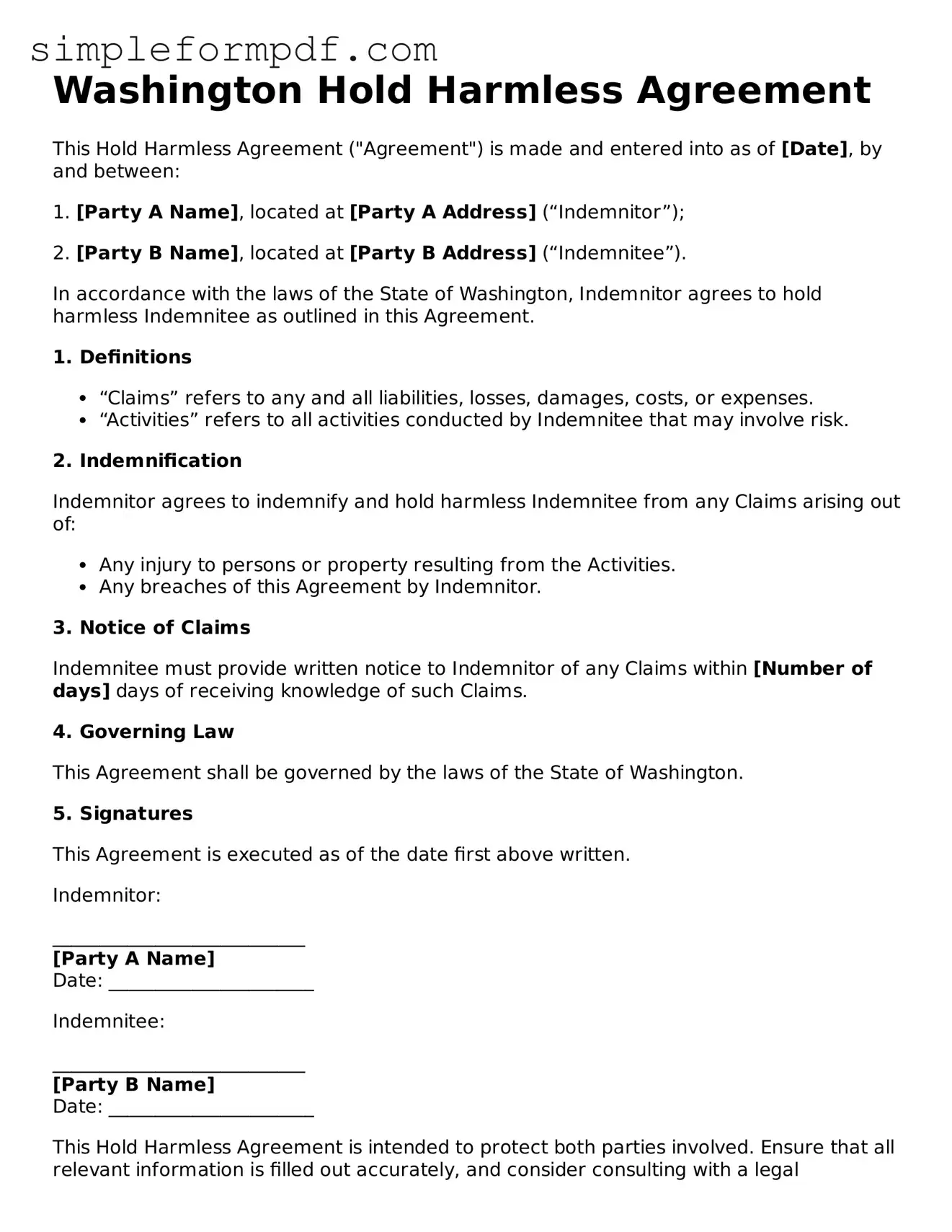Washington Hold Harmless Agreement
This Hold Harmless Agreement ("Agreement") is made and entered into as of [Date], by and between:
1. [Party A Name], located at [Party A Address] (“Indemnitor”);
2. [Party B Name], located at [Party B Address] (“Indemnitee”).
In accordance with the laws of the State of Washington, Indemnitor agrees to hold harmless Indemnitee as outlined in this Agreement.
1. Definitions
- “Claims” refers to any and all liabilities, losses, damages, costs, or expenses.
- “Activities” refers to all activities conducted by Indemnitee that may involve risk.
2. Indemnification
Indemnitor agrees to indemnify and hold harmless Indemnitee from any Claims arising out of:
- Any injury to persons or property resulting from the Activities.
- Any breaches of this Agreement by Indemnitor.
3. Notice of Claims
Indemnitee must provide written notice to Indemnitor of any Claims within [Number of days] days of receiving knowledge of such Claims.
4. Governing Law
This Agreement shall be governed by the laws of the State of Washington.
5. Signatures
This Agreement is executed as of the date first above written.
Indemnitor:
___________________________
[Party A Name]
Date: ______________________
Indemnitee:
___________________________
[Party B Name]
Date: ______________________
This Hold Harmless Agreement is intended to protect both parties involved. Ensure that all relevant information is filled out accurately, and consider consulting with a legal professional for further guidance.
